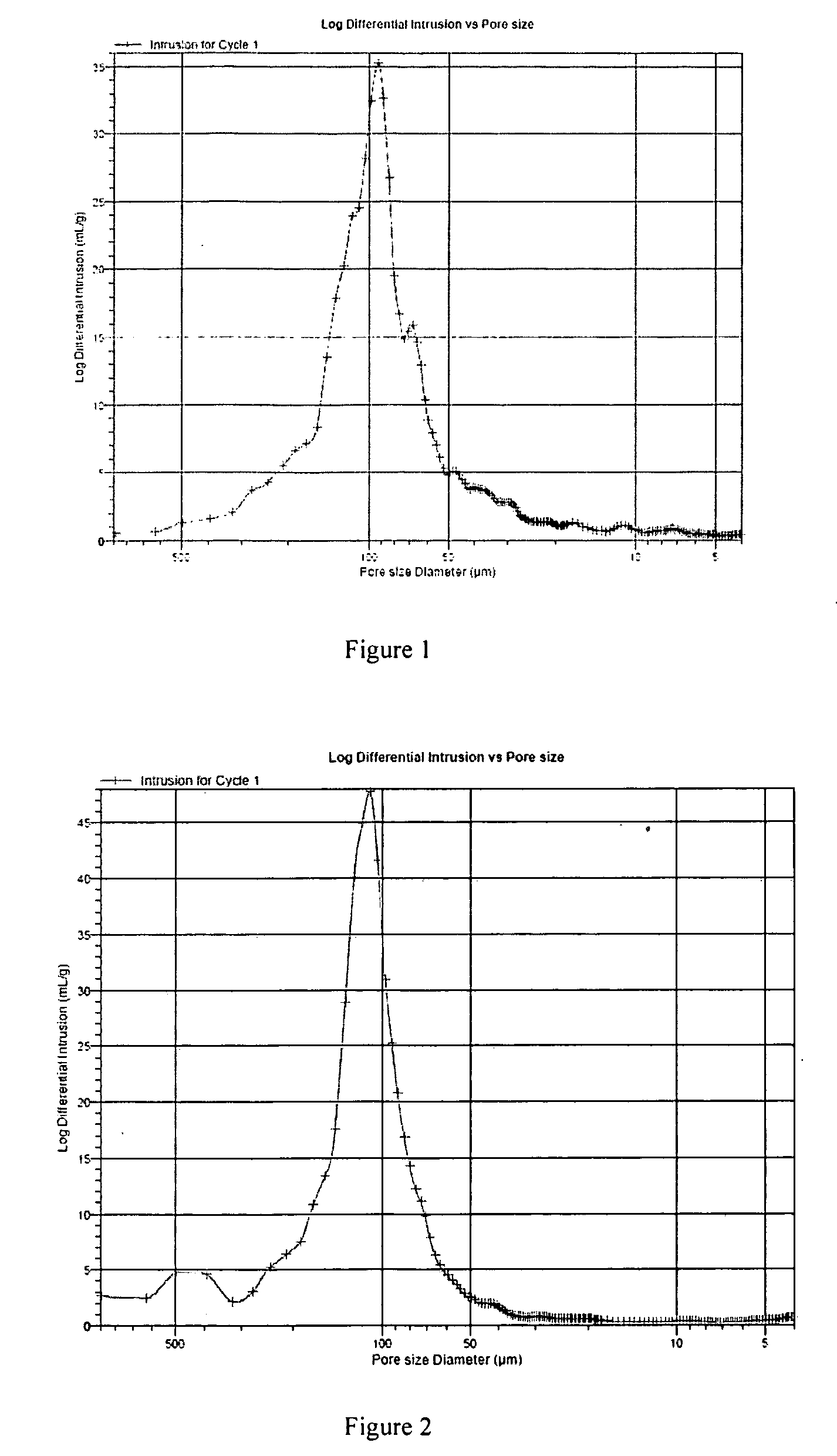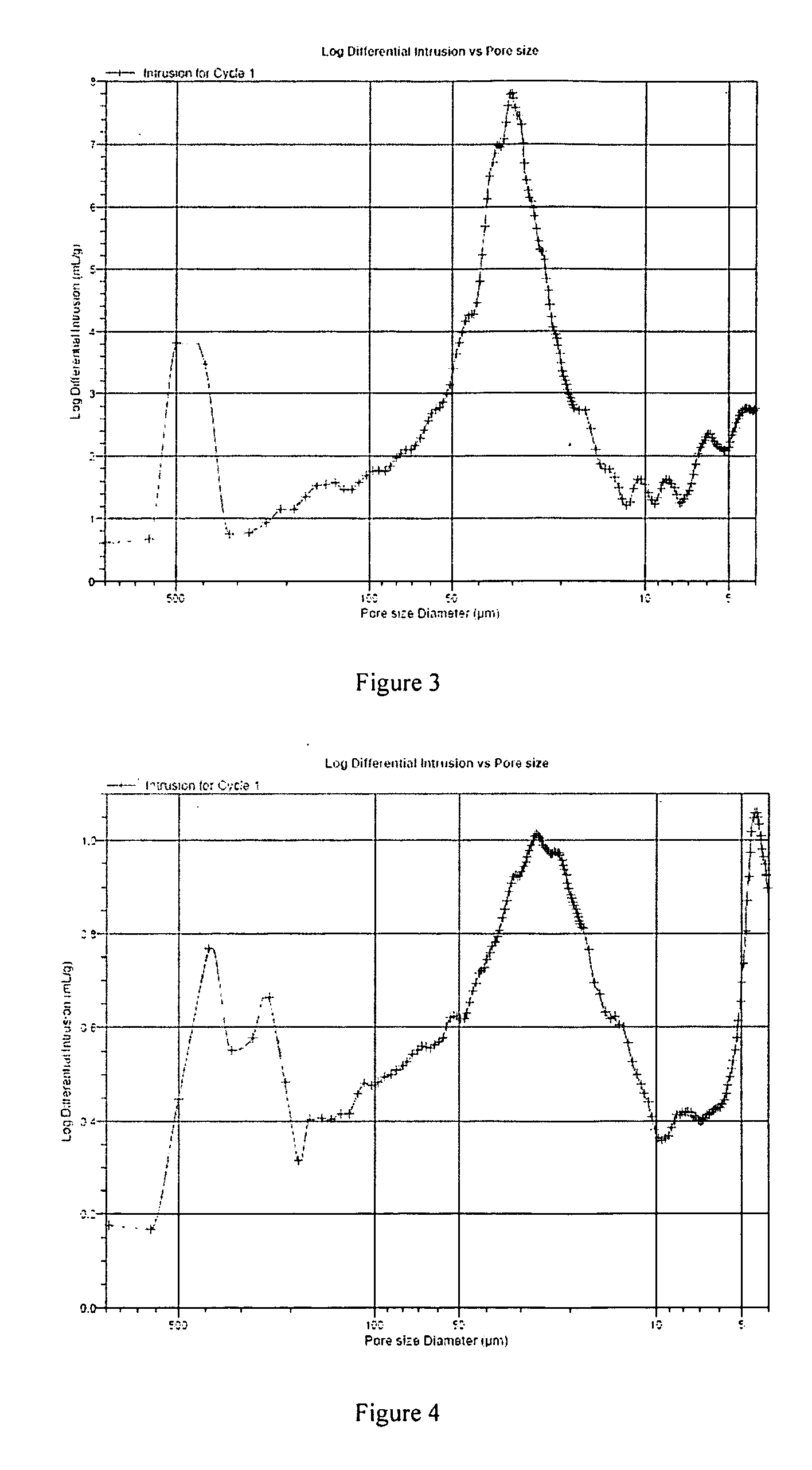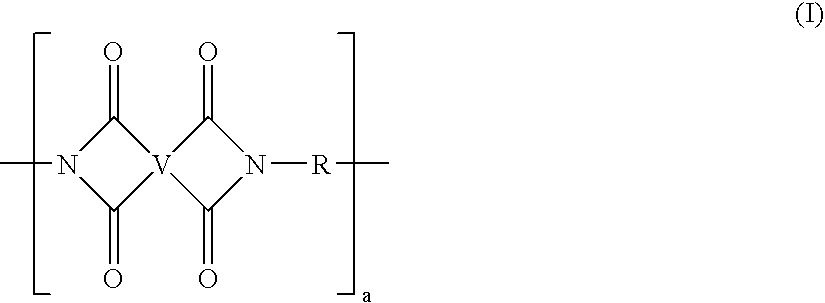Continuous process for making polyetherimide foam materials and articles made therefrom
a polyetherimide foam and continuous process technology, applied in the field of polymer foams, can solve the problems of high material cost, inefficiency of batch process, and difficult justification, and achieve the effects of less waste, less waste, and uniform cell siz
- Summary
- Abstract
- Description
- Claims
- Application Information
AI Technical Summary
Benefits of technology
Problems solved by technology
Method used
Image
Examples
examples
[0049]Several polyetherimide foam materials were made. In these samples, PEI resin (ULTEM™ 1000 PEI resin pellets available from SABIC Innovative Plastics) were melt-blended in a Berstorff Schaumex® twin-screw extruder with varying levels of talc (Microtuff AG 609), acetone, methanol and / or carbon dioxide, depending on whether a less dense foam or a more dense foam was to be formed. The melt was then fed under pressure to a second Berstorff twin-screw extruder, which was used to cool the melt blend. From there, the melt blend was transported through a die to a calibrator where foaming of the product occurred to form the final foam material.
[0050]Table 1 shows the compositional make-up for three examples of PEI foam made according to the concepts of the present invention. Table 2 provides the processing parameters for each sample as well as the resulting physical characteristics of each material. As may be seen, the processes of the present invention were able to form a PEI foam havi...
PUM
| Property | Measurement | Unit |
|---|---|---|
| boiling point | aaaaa | aaaaa |
| density | aaaaa | aaaaa |
| density | aaaaa | aaaaa |
Abstract
Description
Claims
Application Information
 Login to View More
Login to View More - R&D
- Intellectual Property
- Life Sciences
- Materials
- Tech Scout
- Unparalleled Data Quality
- Higher Quality Content
- 60% Fewer Hallucinations
Browse by: Latest US Patents, China's latest patents, Technical Efficacy Thesaurus, Application Domain, Technology Topic, Popular Technical Reports.
© 2025 PatSnap. All rights reserved.Legal|Privacy policy|Modern Slavery Act Transparency Statement|Sitemap|About US| Contact US: help@patsnap.com



